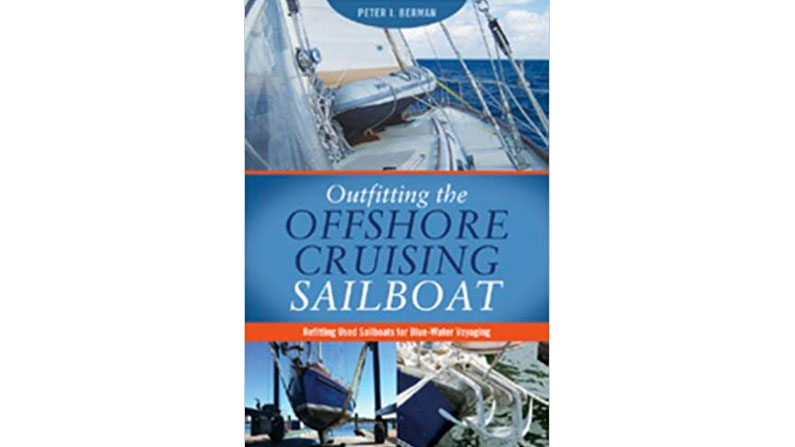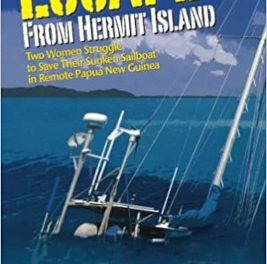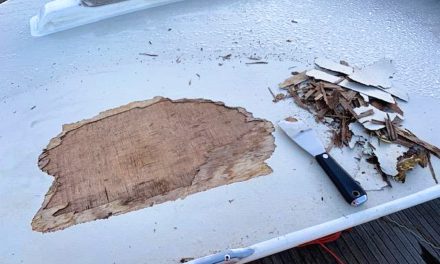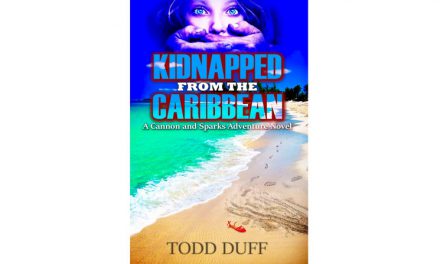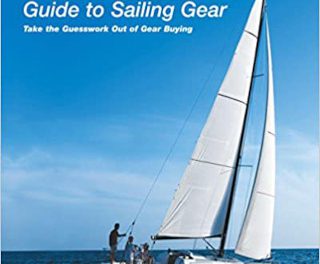 The subtitle, Refitting Used Sailboats for Blue-Water Voyaging, of Peter Berman’s new book, Outfitting the Offshore Cruising Sailboat, tells why it’s an important new reference for good old boaters. Peter’s basic premise is that new offshore cruising sailboats are prohibitively expensive and somewhat uncommon, while the market in used cruising sailboats is rich and vast and flourishing. There’s something there for everyone.
The subtitle, Refitting Used Sailboats for Blue-Water Voyaging, of Peter Berman’s new book, Outfitting the Offshore Cruising Sailboat, tells why it’s an important new reference for good old boaters. Peter’s basic premise is that new offshore cruising sailboats are prohibitively expensive and somewhat uncommon, while the market in used cruising sailboats is rich and vast and flourishing. There’s something there for everyone.
His 45-year experience as a cruiser in nearly a dozen different designs (CCA through modern racing designs) is enlightening. While Peter has formed strong opinions about many features, he does not recommend one design type over another. He knows, perhaps better than most, that every sailboat is a compromise and that priorities and budgets will vary from sailor to sailor.
What he offers is a series of observations and a logical review of onboard systems that will help any prospective offshore cruiser consider the pros and cons of each system, feature, and sailboat type. In the end, the reader of Outfitting the Offshore Cruising Sailboat will be able to determine which features are personally important and which have a lower priority.
I chuckled occasionally at Peter’s dry wit but found that I didn’t agree with every word of his sage advice. I’m just one sailor, after all, with one set of values and preferences, but I was surprised, for example, to note that Peter overlooked the value of freshwater sailboats, as they apparently do not figure in the experience of this East Coast (and beyond) sailor.
Peter starts his discussion of good used boats by ranking the most expensive systems: the rig, the engine, and the ground tackle. As these are the most expensive items to replace, he gives each system a thorough and thoughtful critique based on his experiences as a cruiser. There are many nuggets here for every would-be cruiser. In particular, he includes good tips about good and bad construction features in the rig, bearing in mind intended use for coastal vs. offshore work. This section clearly spells out features to look for if you will be cruising offshore.
Over all, Peter offers great advice about buying a good old cruising sailboat and how to refit it for several more decades of offshore cruising adventures. Like the rest of us, Peter has conflicts about the best possible cruising sailboat. After saying that larger is always better, that system redundancy is critically important, and that you should replace practically everything before going offshore, Peter admits that his first cruiser was probably his favorite. A primitively equipped wooden Dickerson, this boat cost only $16,000, had fewer systems to maintain, and was his most affordable cruiser. After telling readers they should probably invest the purchase price of the boat in the refit, and to replace all the important and expensive systems, he reminds us that the first priority is to “just go.” Time is the enemy, he says, so don’t spend your life in “endless outfitting.”
In the end, as in all things, it’s up to the reader to make his own choices based on his own list of priorities. But Peter offers great advice that may help each reader rank his own list of priorities and consider some systems and construction methods that he may not have thought about.
If you’re still searching for your offshore sailboat and juggling the hundreds of variables, Peter Berman — a guy who’s been there and done that — has some very useful advice for you.
Read this book. Then go get the boat, get to work on the refit, and get going . . . now —while you can.
Outfitting the Offshore Cruising Sailboat: Refitting Used Sailboats for Bluewater Voyaging by Peter I. Berman (Paradise Cay Publications, 2012; 256 pages)

